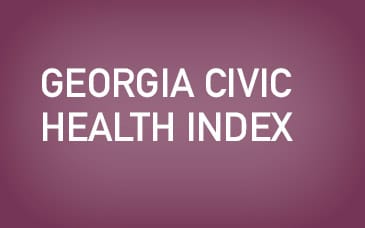Community Resources
To empower our community to craft local solutions based on local decisions, we have access to the latest research and information, from Georgia Family Connection Partnership, about best practices for collaborating and improving the well-being of children and families.
- Dive into state and local level policies that affect Georgia’s communities.
- Check out the Evaluation Snapshot series of research summaries that will help as we plan, implement, and account for effects of our strategies on outcomes for children and families
- View or download annual reports as well as compendiums regarding topics like building the path to reading proficiency and addressing low birthweight in Georgia.
- Check out the Georgia Civic Health Index, which seeks to answer the question: “How do Georgians participate in civic life and what does it mean for Georgia?”
Cessation Resources
Georgia Tobacco Quit Line
Support is available by contacting the Quit Line 1.877.270.STOP (7867) or text READY to 34191 (English) LISTO to 34191 (Spanish) or visit www.quitnow.net/Georgia
https://dph.georgia.gov/readytoquit
Live Vape Free
Live Vape Free is a program offering expert (and anonymous) support and programs that empower constructive conversations about the growing risks associated with vaping. No judgment. Just help. Get support and tools to quit vaping for good.
Protecting our Children from Secondhand Smoke
Secondhand smoke is a danger to our children and our families. Secondhand smoke comes from lit cigarettes and cigars. It also comes from smoke breathed out by smokers. When children breathe secondhand smoke, it is like they are smoking, too. Learn more at these links:
Latino Communities
African American Communities
Second Hand Smoke and Children
Secondhand smoke (SHS) is the smoke or aerosol that comes from the end of a tobacco product. It can also be exhaled by a tobacco user. Click here to learn more.
Third Hand Smoke and Children
Thirdhand Smoke: A Threat to Children’s Health. Thirdhand smoke (THS) is the leftover residue that stays in a room or vehicle after a tobacco product has been used.
Click here to learn more.
An Educator’s Role: How to Talk to Students About Vaping
Click here to learn about resources to help young people quit and the health impacts of vaping and share this important informational sheet. Learn more at CDC.gov/Vaping.
E-cigarettes and Youth: What Parents Need to Know
Electronic cigarettes (e-cigarettes) are battery-powered devices that deliver nicotine, flavorings, and other ingredients to the user. Using e-cigarettes is sometimes called “vaping.” E-cigarettes do not create harmless “water vapor” – they create an aerosol that can contain harmful chemicals. Click here to learn more.
Youth Vaping: A Serious Public Health Concern
Be Aware of E-Cigarette Products! Some devices popular among teens are as small as a USB flash drive and even look like one. Click here to learn facts about E-Cigarette use.



